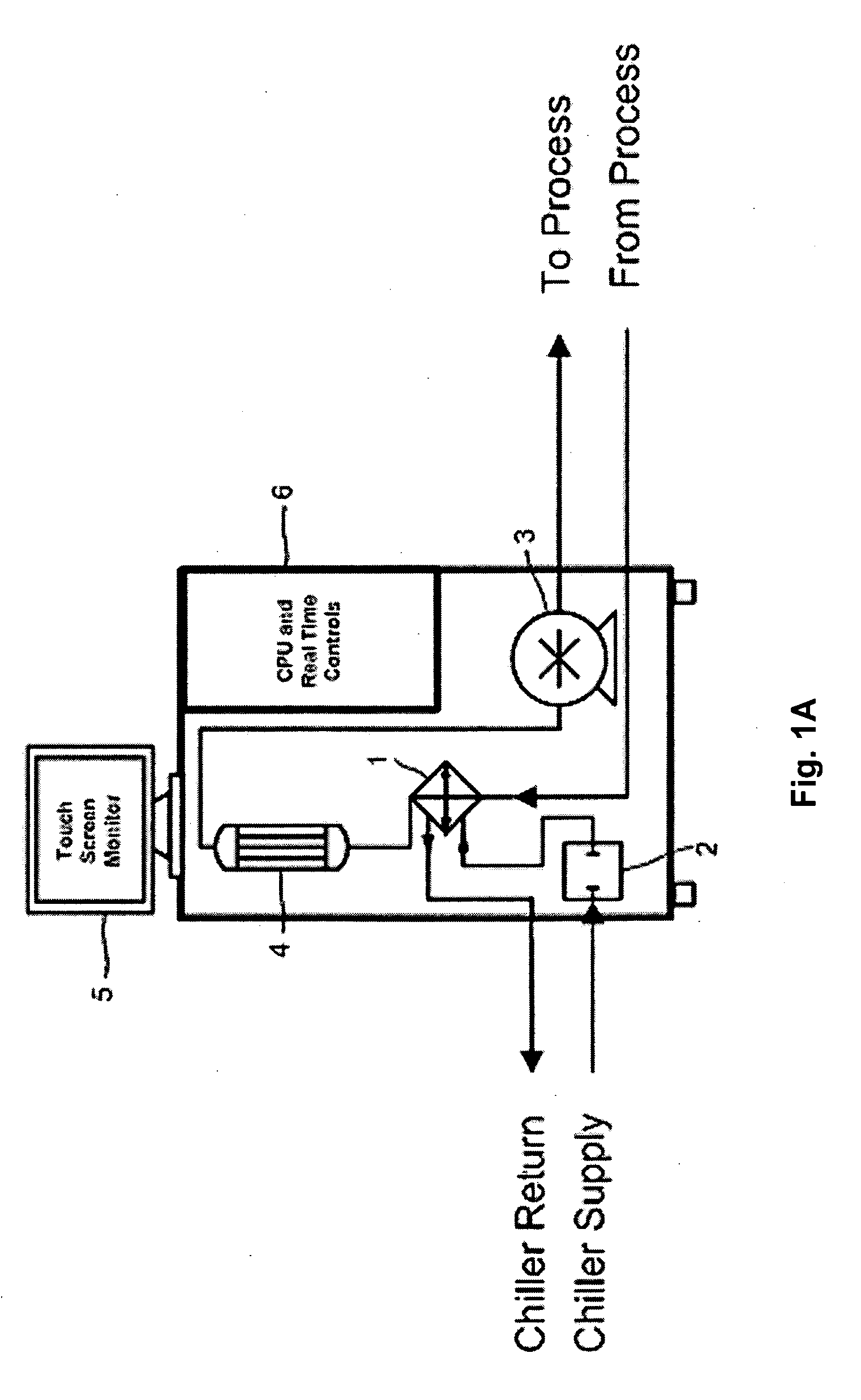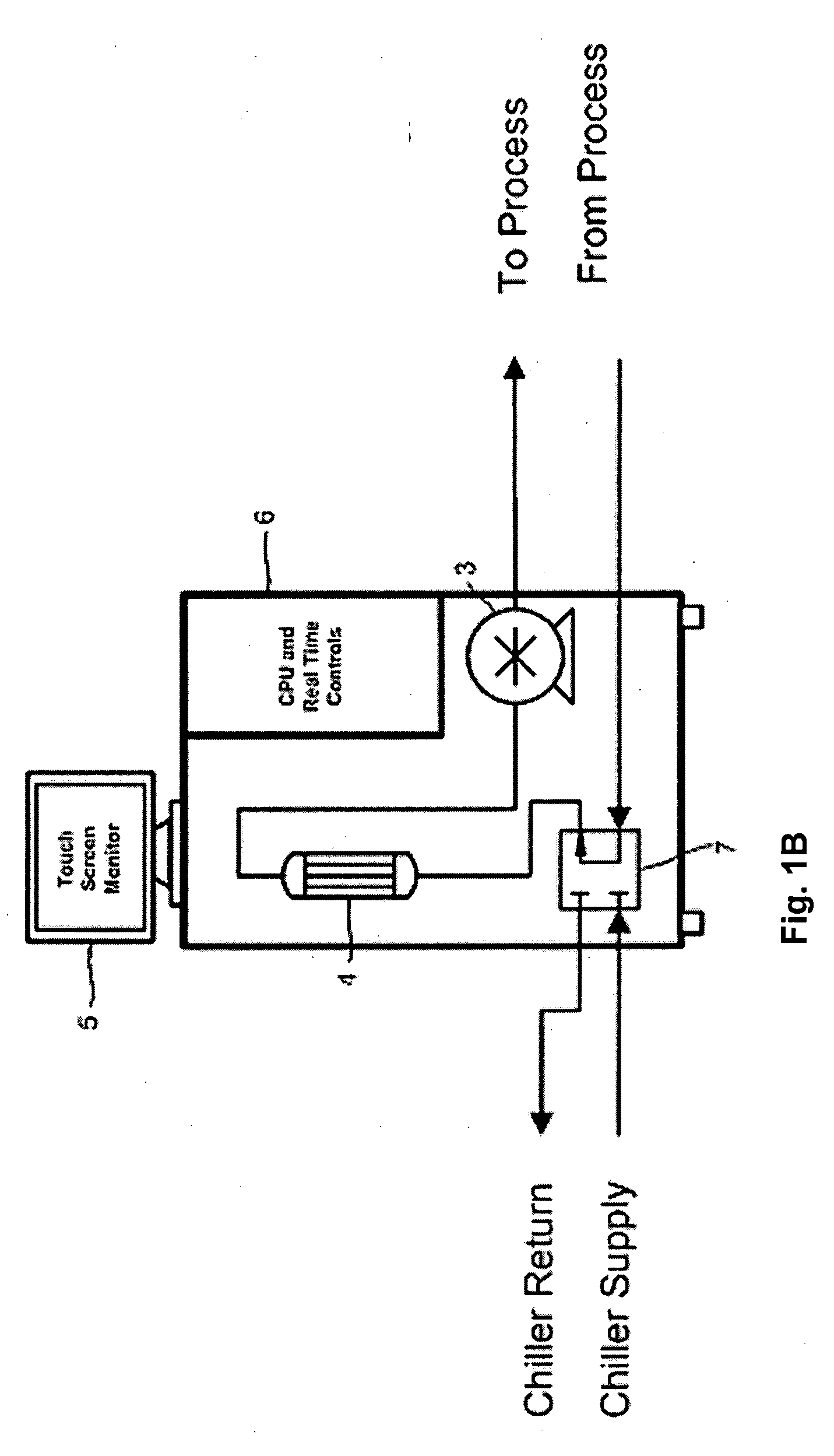Method and apparatus for controlling the temperature of molds, dies, and injection barrels using fluid media
a technology of fluid media and injection molding, which is applied in the direction of domestic cooling apparatus, heating types, instruments, etc., can solve the problems of limiting the precision and reliability of the temperature control process, and achieve the effects of reducing the cost or inefficiency of conventional systems, reducing the loss of slippage, and reducing the cost of operation
- Summary
- Abstract
- Description
- Claims
- Application Information
AI Technical Summary
Benefits of technology
Problems solved by technology
Method used
Image
Examples
Embodiment Construction
[0034] One embodiment of the present invention provides a servo stepping motor operating a positive displacement thermal control fluid pump as part of an injection molding temperature control system, commonly called a “circulator” or circulator system. A servo stepping motor is somewhat tolerant of supply line voltage fluctuations that will vary the speed of a conventional motor. The positive displacement pump meters exact quantities of thermal control fluid or coolant in proportion to controlled revolutions of the stepping motor. This circulator system is used to control the temperature of a mold, die or injection barrel by circulating a fluid medium, at a suitably lower or higher temperature depending on whether the process is exothermic or endothermic, through a network of channels in the mold in the conventional manner, adding or extracting heat from the mold. The loop of pre-heated or pre-cooled fluid that is plumbed from the circulator pump to the mold, die or injection barrel...
PUM
| Property | Measurement | Unit |
|---|---|---|
| temperature | aaaaa | aaaaa |
| temperature | aaaaa | aaaaa |
| thermal energy | aaaaa | aaaaa |
Abstract
Description
Claims
Application Information
 Login to View More
Login to View More - R&D
- Intellectual Property
- Life Sciences
- Materials
- Tech Scout
- Unparalleled Data Quality
- Higher Quality Content
- 60% Fewer Hallucinations
Browse by: Latest US Patents, China's latest patents, Technical Efficacy Thesaurus, Application Domain, Technology Topic, Popular Technical Reports.
© 2025 PatSnap. All rights reserved.Legal|Privacy policy|Modern Slavery Act Transparency Statement|Sitemap|About US| Contact US: help@patsnap.com



